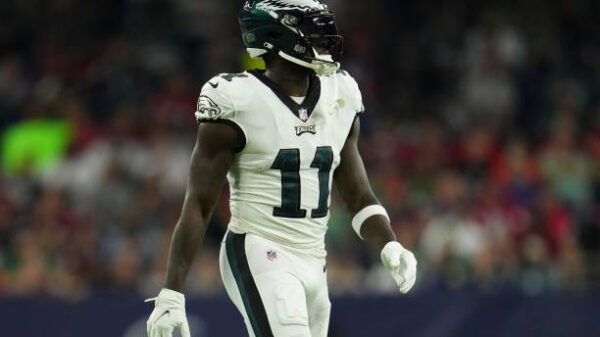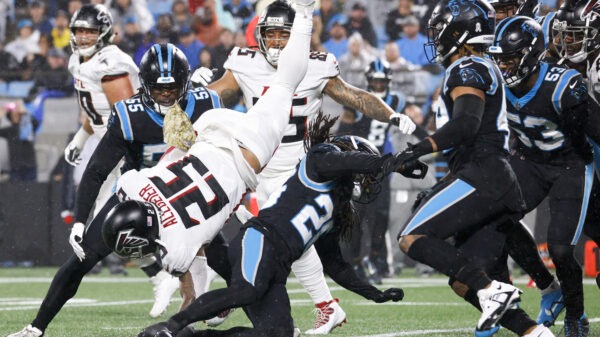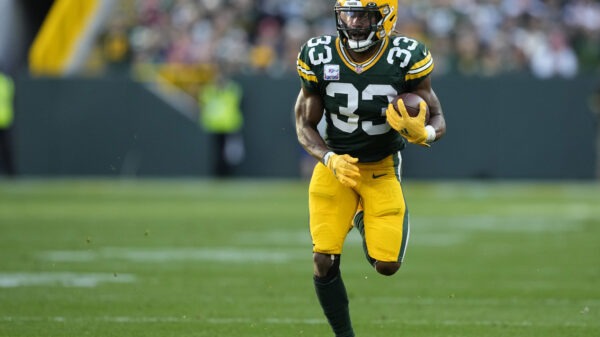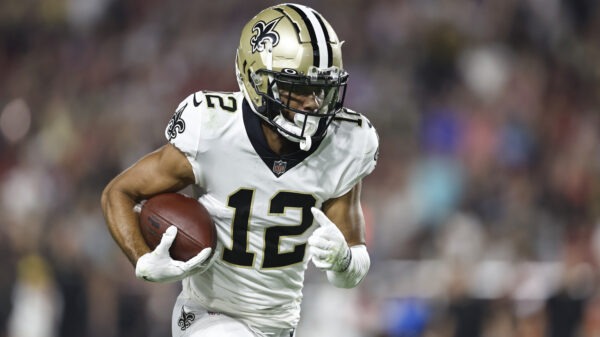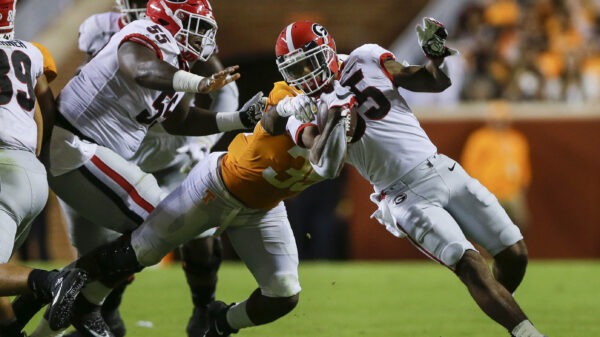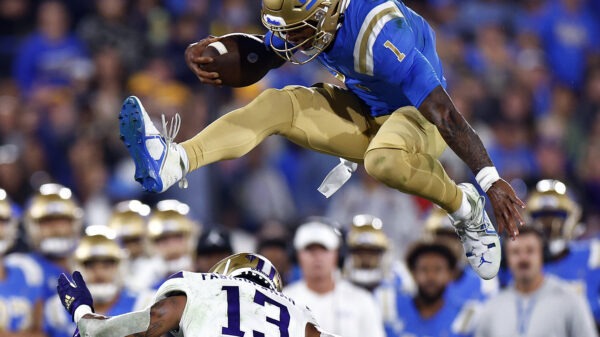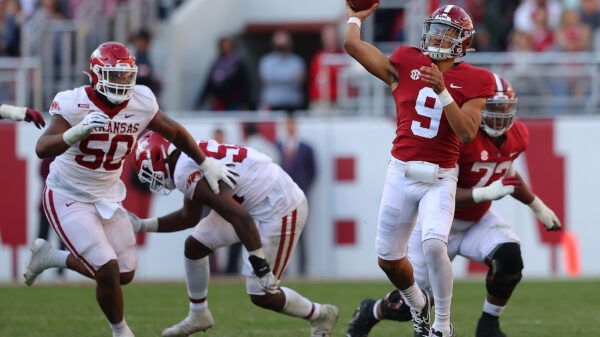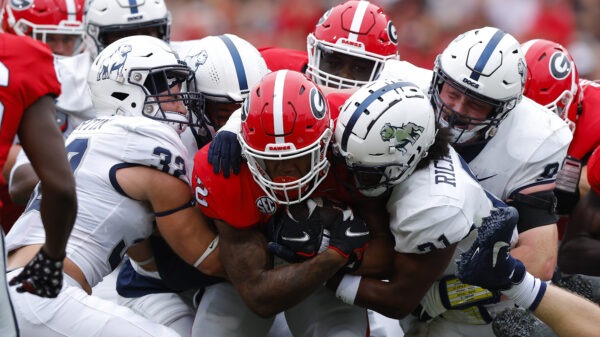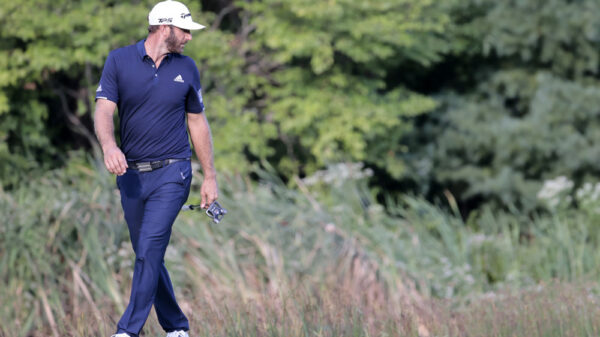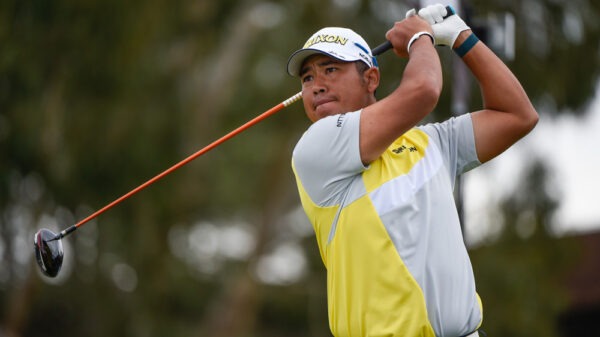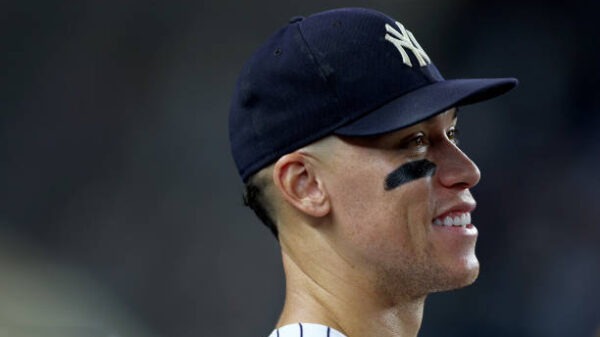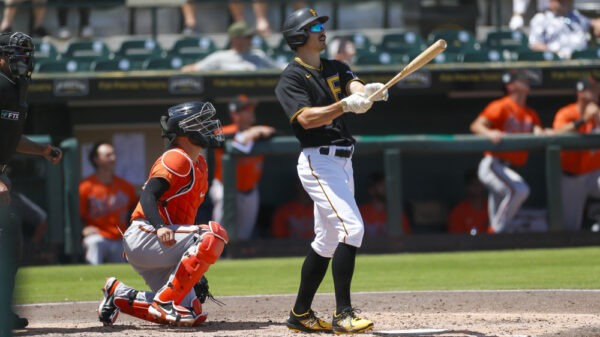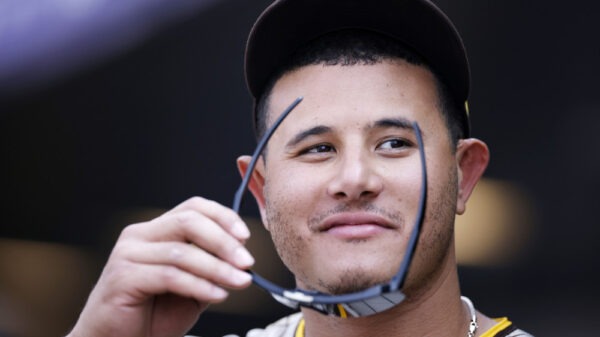How did that happen? This time last summer we’d had to make do with no major championship golf whatsoever and now we’re less than a week away from having experienced seven of them in 10 months. It’s been a dizzy few months and now we get to enjoy something a little bit different: a first return to the linksland for the world’s elite since Royal Portrush and the magnificent triumph of Shane Lowry in 2019. The 149th British Open at Royal St. George’s is very welcome, in other words, and the course, located in Sandwich, Kent, will provide its usual test of seaside skills and also patience.
Royal St. George’s Golf Club
The most southerly of the British Open rota of courses, Royal St. George’s first hosted the championship in 1894 and was a regular venue until 1949 whereupon it was kept out in the wilderness until earning a return in 1981. The R&A have returned there another four times since and its reputation remains more or less constant.
Does that sound like a somewhat leading description? It should do. If you’re new to the layout, expect to read many words about the shaping of the fairways which are famously humped and act to repel the ball in a somewhat paradoxical fashion. “It’s not my favorite on the rotation,” said Ian Poulter in 2011, at the last championship held there, in reference to those fairways. “There’s a bit of luck involved on this course,” added Jason Dufner. Similar words were and will be repeated. It’s also fair to say that the current Head Greenkeeper Paul Larsen has widened the cut grass and expects less griping about bad bounces.
The course has other traits worth bearing in mind. For one, the greens. “More severe that other Open courses,” said Luke Donald. “Very slopey, very difficult,” concurred Martin Kaymer. Then there is the fact the Sandwich Bay is something of a wind trap. Downwind, players struggle to stop approach shots on the greens, and when it flips it takes an astute golfer to pay heed.
There was much talk in 2011 of the easy holes having hard pin positions and consequently scoring was tough. It adds to the feeling that this course suits golfers who can respond to tests of patience, who can subtly change the game plan according to conditions, and who putt smartly. It will play to a par of 70 with a yardage of 7,189. Key hole? The 491-yard par-4 fourth which can make or break a round.
Weather
The weather for Sandwich, Kent is solid, or as solid as it ever can be when discussing a British or Irish seaside venue. Practice days have caught rain and the course is sodden, but the forecast is for partly cloudy improving to hot conditions throughout the championship itself. Temperatures will be in the 60s, humidity in the 80s, and here’s where the fun starts: the wind is forecast to be WNW until the weekend, W on Saturday and SSE on Sunday. If that gets up (currently no more than 15 mph) it will catch some out.
Past Champions in the British Open and at Royal St. George’s
As with the other two nomadic majors, trends do emerge from the list of past winners no matter which course hosts. It’s probably best, however, to stick to the last 10 winners in seeking patterns. That way we overcome changes to the championship committee’s aims, and also alterations in equipment, technology and playing styles.
So, eight of the last 10 winners of the Claret Jug played the week before their triumph – and six of the last nine played links golf as their last warm-up exercise. Nine of the last 10 winners had already record a top 10 finish in the championship and eight of the 10 had won earlier that year. The last eight winners had all logged at least one top 30 in the year’s previous majors.
Those winners were Louis Oosthuizen in 2010 and Zach Johnson in 2015 on The Old Course, Ernie Els in 2012 at Royal Lytham, Phil Mickelson at Muirfield in 2013, Rory McIlroy triumphed at Royal Liverpool in 2014, Henrik Stenson did so at Royal Troon in 2016, Jordan Spieth succeeded him at Royal Birkdale in 2017, Francesco Molinari was victorious at Carnoustie a year later and then Lowry claimed the glory two years ago.
Missing from that group is Darren Clarke, the champion in 2011. Before him Bill Rogers (1981), Sandy Lyle (1985), Greg Norman (1993) and Ben Curtis (2003) landed wins at Royal St George’s. Does anything link them? Maybe only that they played very fine golf, on a testing course, one which Clarke described after his win as: “A really tough, stern test.”
Here’s are some entirely FREE suggestions for you this week with MORE for subscribers (DraftKings Prices)
| A list | T. Hatton | $9,000 | |
| B list | P. Casey | $8,600 | |
| B list | S. Scheffler | $8,200 | |
| C list | B. Grace | $7,200 | |
| C list | H. English | $7,300 | |
| Avoid | B. DeChambeau | $9,900 | |
Tyrrell Hatton ($9,000) The Englishman has made 26 starts on the linksland and he’s landed 13 top 20s, 10 of them top 10s, including two victories in the Alfred Dunhill Links Championship. “I wish we’d played link golf every week next year,” he said after the first. What’s also notable is that he had early problems, missing his first four cuts in the British Open (and first two in the Dunhill Links). So all that success is recent and includes two top sixes in the championship. A winner this year in Abu Dhabi, T–2 at links-like Congaree and fired a final round 65 last week in the Scottish Open.
Paul Casey ($8,600) A confidence performer and he has lots of it at the moment. He’s finished top 40 in all six majors since the return from lockdown, three of them top 10s. He’s also made 11 of his last 13 cuts in the British Open, with five top 30s. Another winner this year, he said last week: “The older I get the better I get. Mega-excited about the Open. I’ve got a great opportunity to have a summer that defines my career. When I’m enjoying things, great things can happen.”
Scottie Scheffler ($8,200) Is the Texan youngster under-rated? He’s made nine of his last ten cuts. Since making the PGA Tour he’s recorded five top 20 finishes in five majors championship starts. He’s finished fifth and second in the World Golf Championship events this year. And he was T–12 on linksland debut last week with a second round 63. Yes. Under-rated.
Branden Grace ($7,200) His victory in February’s Puerto Rico Open was important. It was an opposite field event when he’d have wanted to be playing WGC that week, and it was also by the sea. He likes it there, his low trajectory biting through the win (indeed, he’s a past winner of the Dunhill Links Championship and also The Heritage at Harbour Town). He contended for 54-holes at the PGA Championship, then was T–4 at the Memorial and T–7 at the US Open. He’s 8-for-9 at playing four rounds in the British Open.
Harris English ($7,300) It’s been a while since (2016) he played the British Open, but he is 4-for-5 in it and he’s a much, much better golfer now. He won the Tournament of Champions in January, had a down-turn, but threatened to win at links-like Congaree and also in the US Open before he did win the Travelers Championship. Has made nine of his last 10 cuts and has four top 15s in five starts.
Bryson DeChambeau ($7,300) He’s finished missed cut, T–51, missed cut in the championship. He’s shot 76-75-74 in the first round. He’s never broken 70 in eight attempts. The rough might really hurt him this week. It will only take that happening once or twice. He also has just one top 10 in eight stroke play starts. Good enough to do something amazing, but not worth the risk.
Here’s Another Alternate of Core Picks For the British Open
| A list | J. Spieth | $9,700 | |
| B list | T. Fleetwood | $8,000 | |
| B list | C. Bezuidenhout | $7,400 | |
| C list | S. Cink | $6,900 | |
| C list | M. Kinhult | $6,600 | |
| Avoid | M. Fitzpatrick | $7,900 |
Jordan Spieth ($9,700) The 2017 Open champion is unlikely to be fazed by his tee balls bouncing off the fairway – his do that most of the time. So he’s used to approaching the green from odd spots and he’s also very good at it. Then there’s those ptting surfaces: slopey greens are Spieth’s thing, they get his brain fizzing. He’s 7-for-7 in the Open, missed the playoff by one in 2015, won in 2017, and contended on defense. He’s on a run of 12-for-12 with only two failures to make the top 20.
Tommy Fleetwood ($8,000) Very like Hatton, Fleetwood is a brilliant linksland performer, as you’d expect of a lad born and brought up nearby Royal Birkdale. Since the start of 2018 he has played on the linksland eight times. His worst finish was T–26 with five top 10s in that number, including second in the last Open at Royal Portrush. He’s motivated this week. He felt he could have done better in that last Open.
Christiaan Bezuidenhout ($7,400) Tough fairways to hit means approach shots from off the fairways means missed greens. Add in difficult slopey greens and the short game is going to matter. Kaymer noted that the key shot might be par savers from six to eight feet. Few are cooler around and on the greens than this South African. He’s also played four rounds in all of his last 19 starts (two of them had no cut, not that he was close to missing one had there been).
Stewart Cink ($6,900) Until this season the 2009 Open champion had really not played very well since that wonderful triumph. But he won the Safeway Open and then added The Heritage, a week when we tipped him. We’ve bought him frequently since and he keeps delivering weekend golf. Here’s why he stays on the team: even when struggling everywhere else, he has enjoyed returning to the Open: in fact he has five top 30 finishes in his last eight visits. And he’s playing much better than ahead of any of them.
Marcus Kinhult ($6,600) An unknown Swede to many but worth considering if you need a really low salary. He won the amateur Lytham Trophy (yes, played at Royal Lytham) by eight shots, and backed that up with a first European Tour win at Hillside, a linkland gem next door to Royal Birkdale. Returned to the Tour only recently, but was threatening heading into the weekend last week at the Renaissance Club. Sneaky.
Matthew Fitzpatrick ($7,900) A rarity among the raft of young Englishman around at the moment because he doesn’t play that well on the links. He’s made 23 starts by the sea and landed only seven top 20s and just three of them were top 10s. Now admittedly one was playoff defeat last week, but he’s also made 22 starts in the majors as a professional and hasn’t finished top 10 since the very first of them back in 2016. More risk than reward.
Strategy
Keeping it simple. Some sort of proven links success is a must, ideally consistent rather than a one-off. Also golfers who can play in the wind and/or by the sea so they have the savvy to play beneath the wind and also react if the direction changes. This week’s winner is likely to need to be gritty. The picks have dug deep when the chips have been down in the hopes that they can do so again. I’m at the event this week and the severity of the rough is obvious, but it’s also clear that scoring will be possible from the short grass. I also want good performers around the greens because they are severe in places.
Other Player Options For The British Open
• Brian Harman is in great form right now (seven top 20s in nine starts) but beware of him on the links in this event: five starts, four missed cuts, a best of T–26 back in 2014.
• Aussie Jason Day arrives off two top 15 finishes, but Trans-Atlantic flights are bad for his back and his only top 15 Open finish in nine starts was on the Old Course. Poor links performers tend to play their best Open golf in St Andrews.
• Rickie Fowler finished T–5 in Sandwich back in 2011 and he is 9-for-10 and making the cut in the championship.
COVID-19 and Injury Warning:Pro DFS players know it makes sense to stay up-to-date on Twitter, DraftKings, FanDuel and-or subscribe to any number of email feeds and whatever to remain up to speed with injuries or COVID-19 withdraws. Players that don’t make the cut are tough enough. Players that don’t play all four rounds (even when pulling out at the last minute) make for a pretty weak lineup.
Go win your lineups and then tell us how you did. Twitter (@FantasyDFSX) is a good place for that.


